How To Create an Ecommerce Content Strategy for SEO
- Nick Eubanks
- Mar 5, 2019
- 5 min read
Updated: Apr 3
Content might be the most innocuous word on the internet today, even more so within SEO.
It seemingly has no definition; it's everything.
We all know we need it, most folks are confused about what it actually is - and it's even harder to create the elusive, but more desired variation of "great content."
With all that said, crafting content to serve all the different needs of an Ecommerce website might be the most difficult.
Since we work with Ecommerce sites of all sizes, in a wide variety of niches, on all sorts of platforms, we see an amazing level of variability in content production...
The good news is this puts me in a unique position to share some specific, actionable insights with you when it comes to creating content for Ecommerce.
My aim for this post is to run through all of the types of content you should be creating to leverage SEO for driving traffic and sales.
A Note on Creating Content for Ecommerce
The content examples contained in this post are going to represent content to support:
Your product architecture (and converting visitors into customers)
Naturally attracting links without outreach
Earning links with outreach
Identifying the best opportunities to scale link building at an efficient cost per link
Attract shares on social media and organic press mentions
So let's get started first with number 1,
:
Category Content
Category content is what enables you to rank for the highest volume keywords with commercial intent outside of your information architecture and URL-level link profile.
These pages are often built to target 2 and 3 word keywords that represent search intent at the beginning of the customer journey.
The baseline requirements for these pages has evolved significantly since the advent of the mobile-first index, and subsequently RankBrain's ability to better match user intent at the query level to the most ideal experience. For these reasons, the former category page bests practices like;
Having a keyword-optimized H1
Displaying a short, contextually focused textual description
Including a contextually relevant image
Containing links only to SubCategory pages (versus mixing links to SubCats and Featured Products)
are no longer table-stakes, and instead we're seeing high performing pages
, and continuing to dominate.
So keep these points in mind as you browse my selection of high performing SEO category pages.

Link Profile

Keyword Footprint
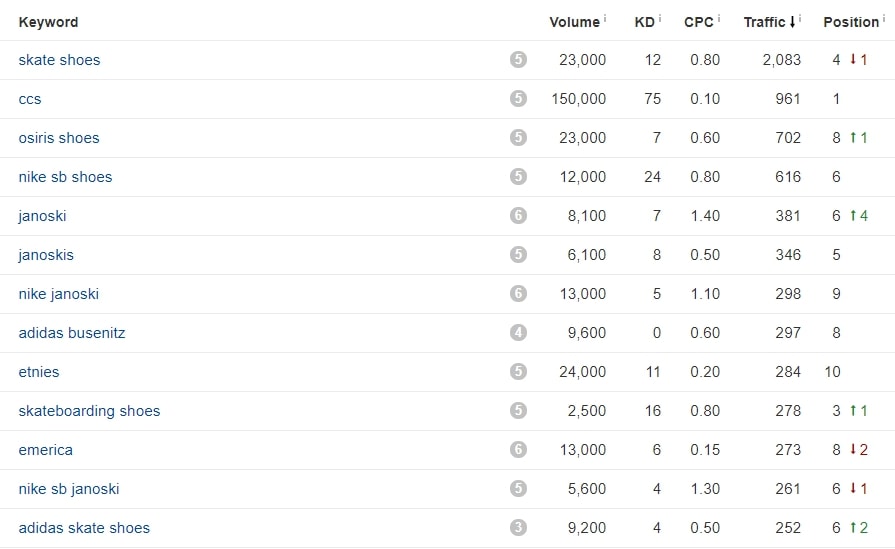
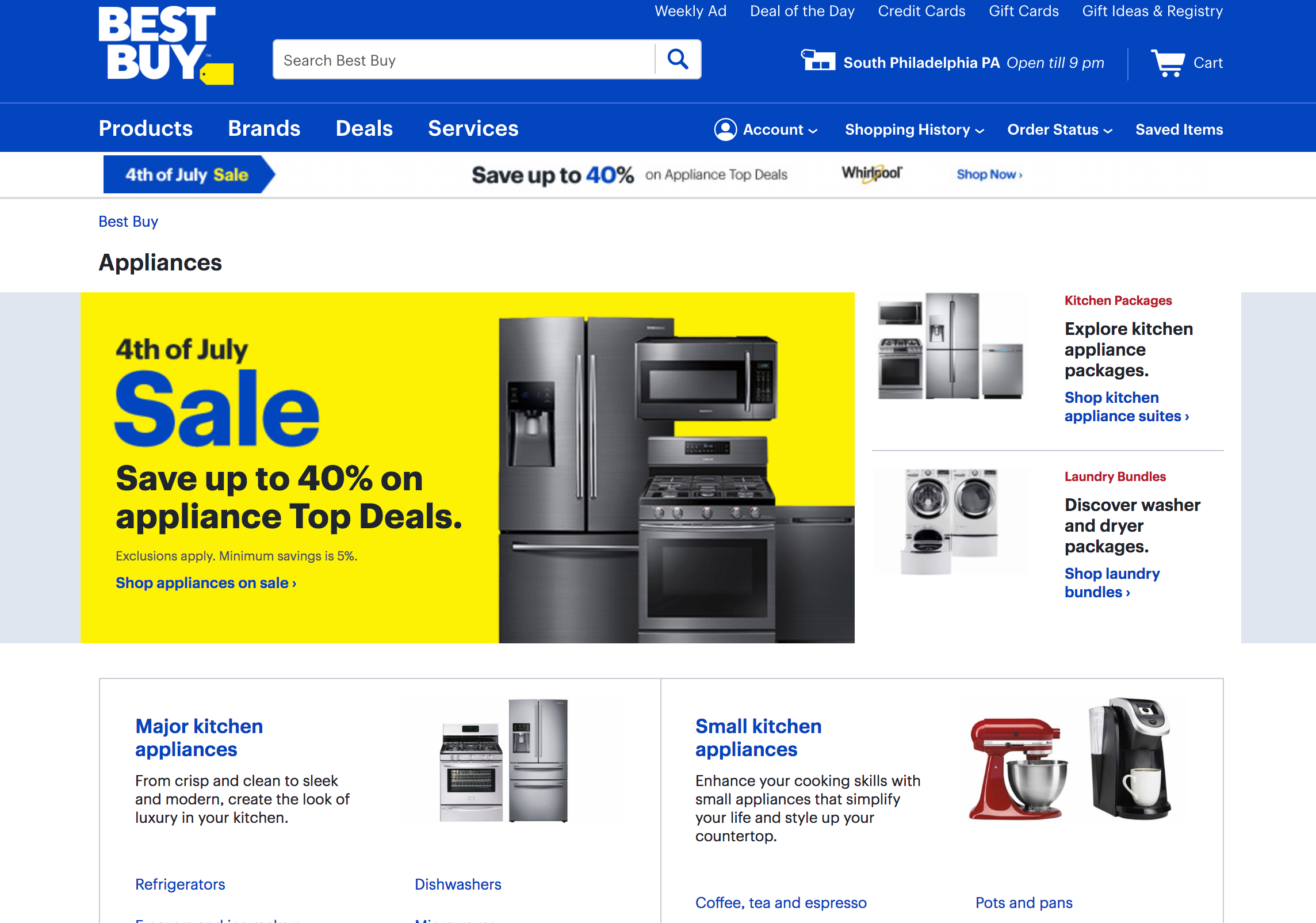
Link Profile

Keyword Footprint
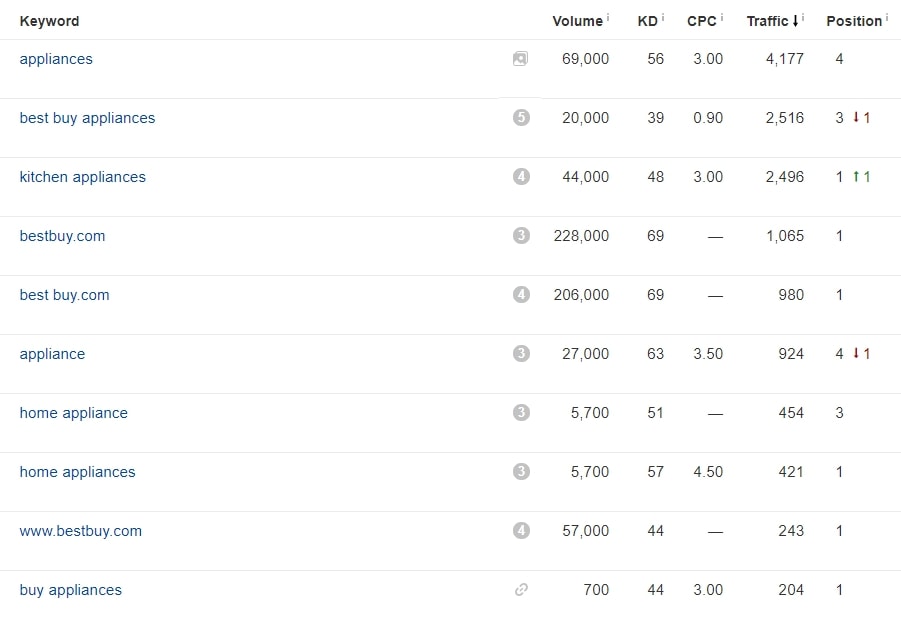
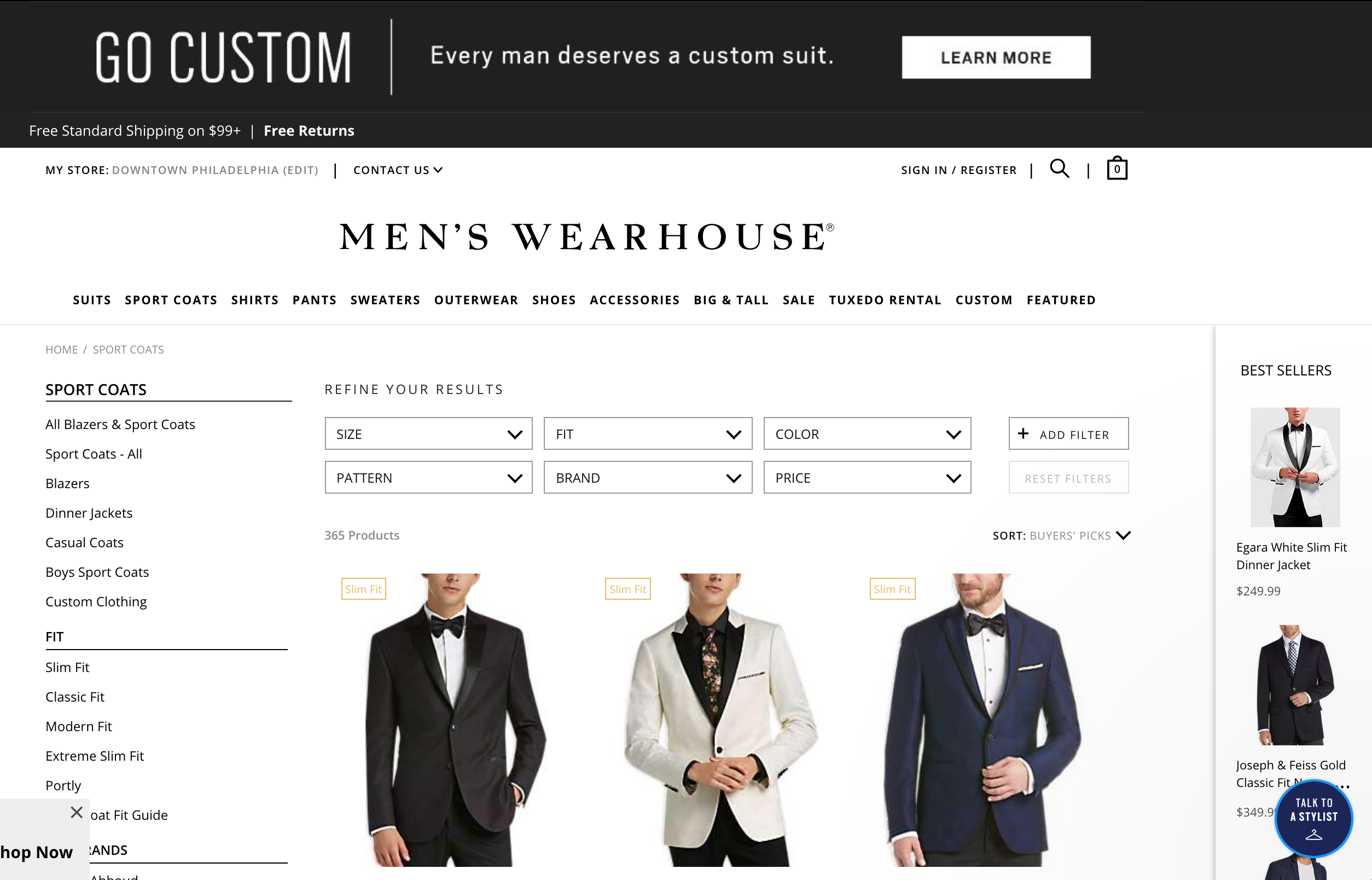
Link Profile

Keyword Footprint
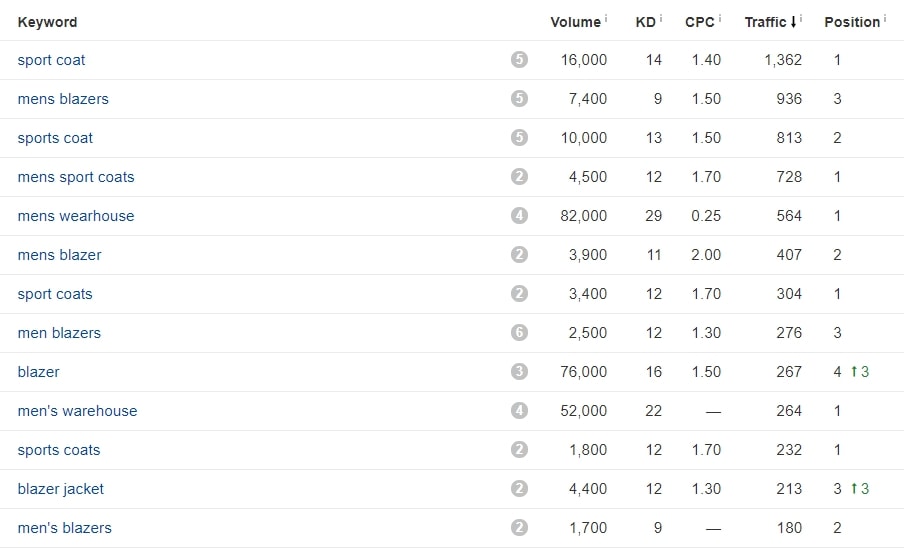
SubCategory Content
SubCat content is the first born child of it's parent; category content. Ranking SubCategories is almost as important as Categories in that the search volume opportunities are likely less, but the commercial intent will be greater.
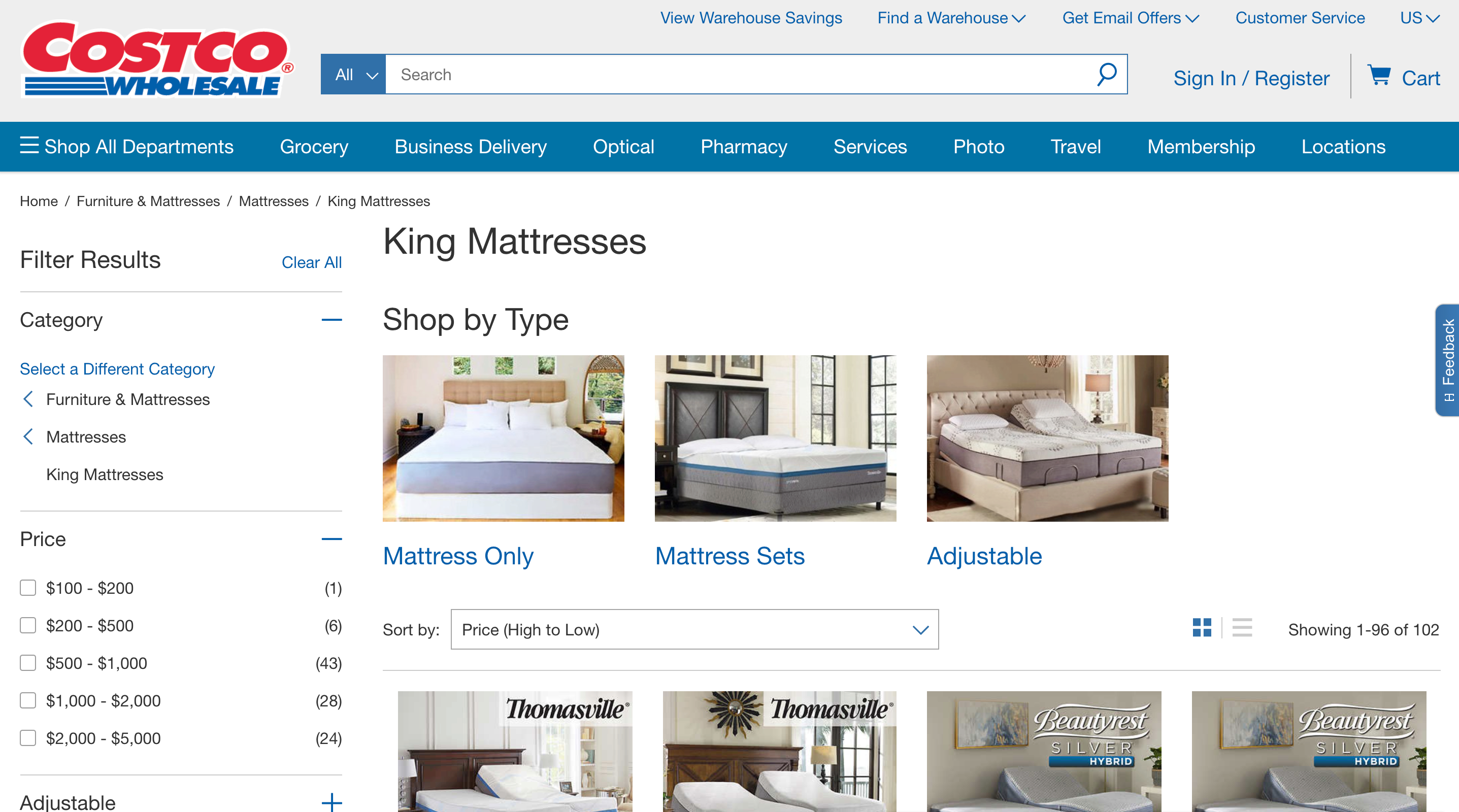
Link Profile

Keyword Footprint
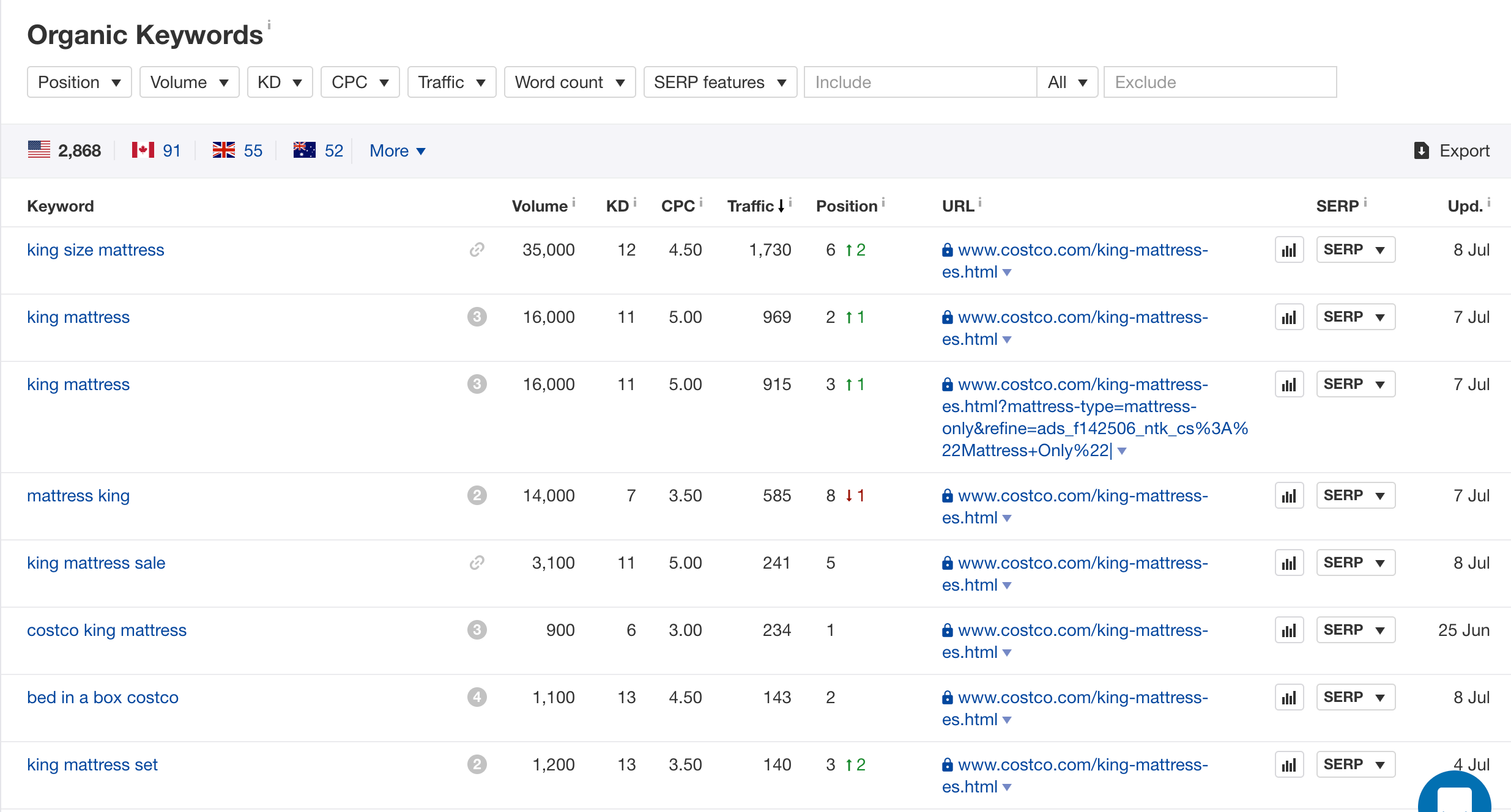
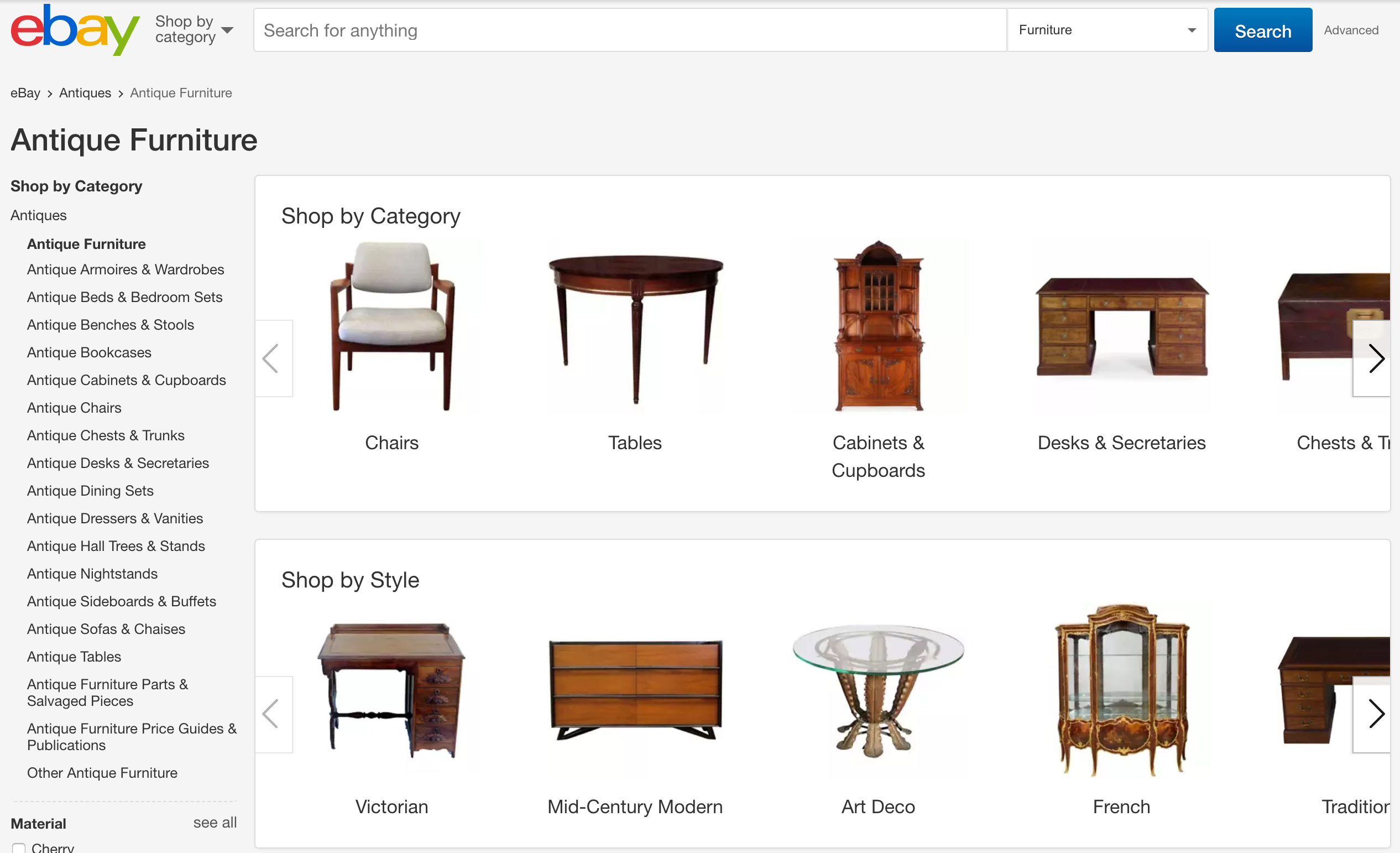
Link Profile

Keyword Footprint
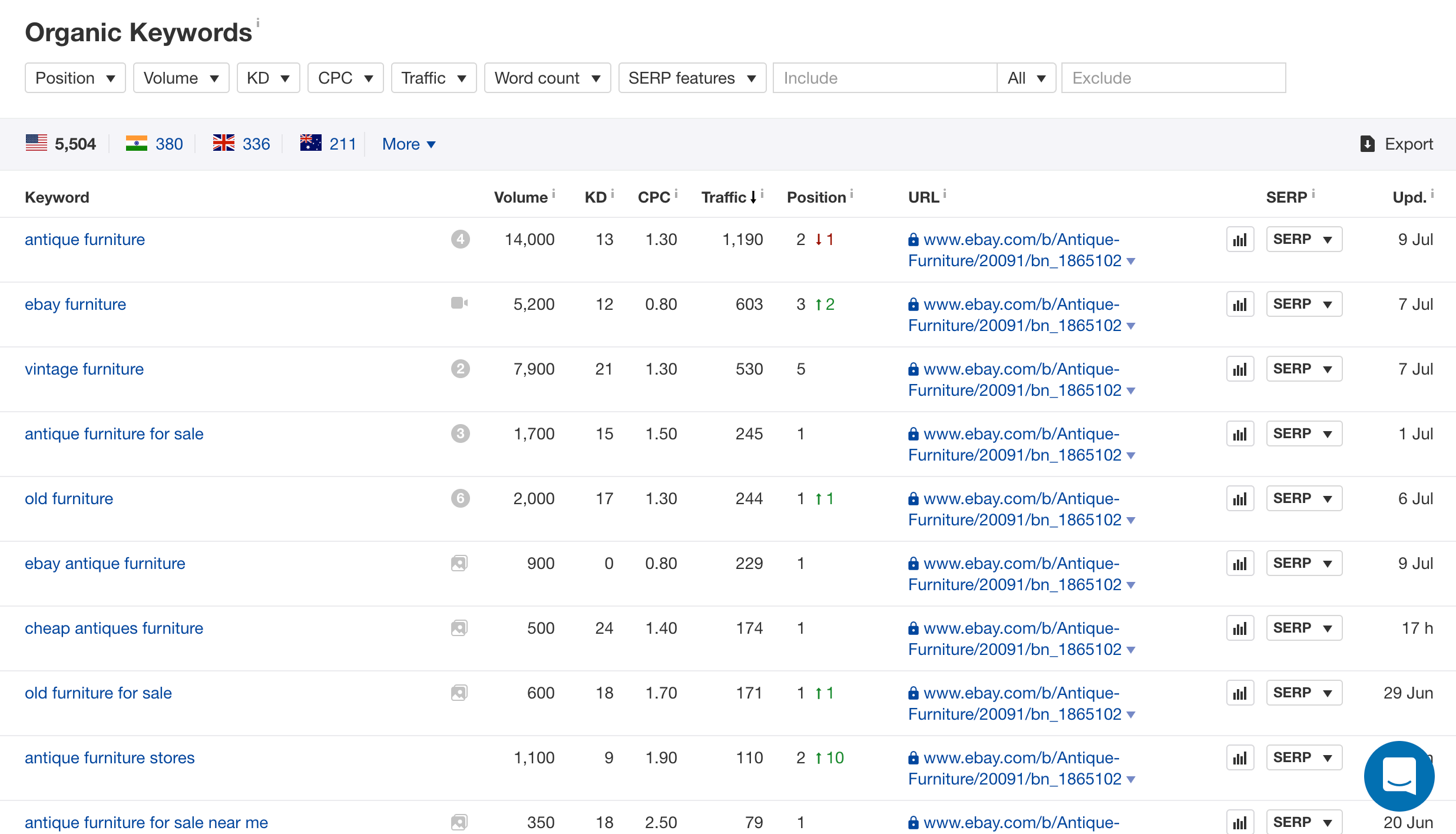
Product Content
Product content is critical in a different way; it needs to build confidence and trust while also selling your target audience on the value of the product.
For the purposes of this post though, we're going to focus on product page experiences where the content is designed and integrated in a way that drives organic rankings for product-related keywords.
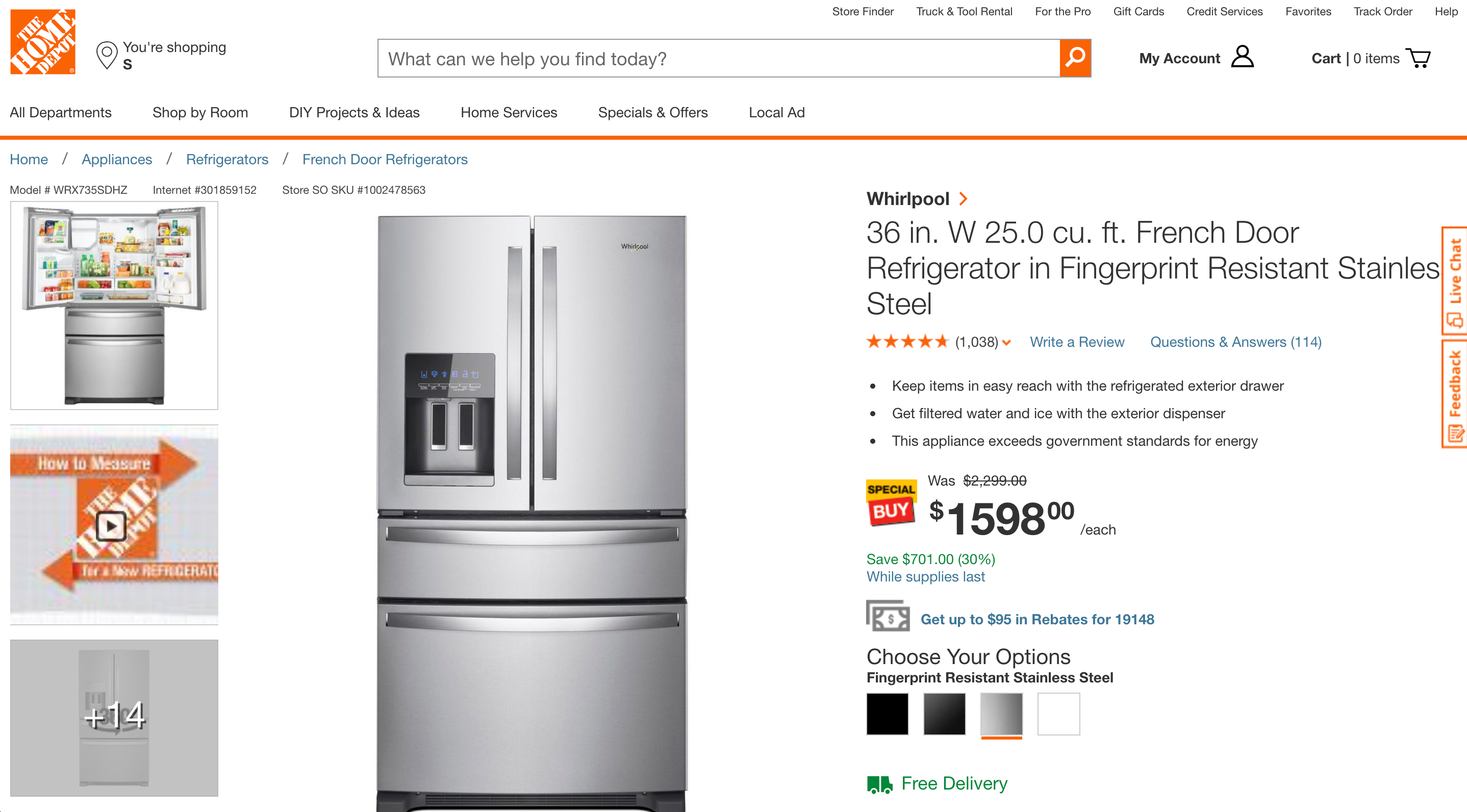
Link Profile

Keyword Footprint

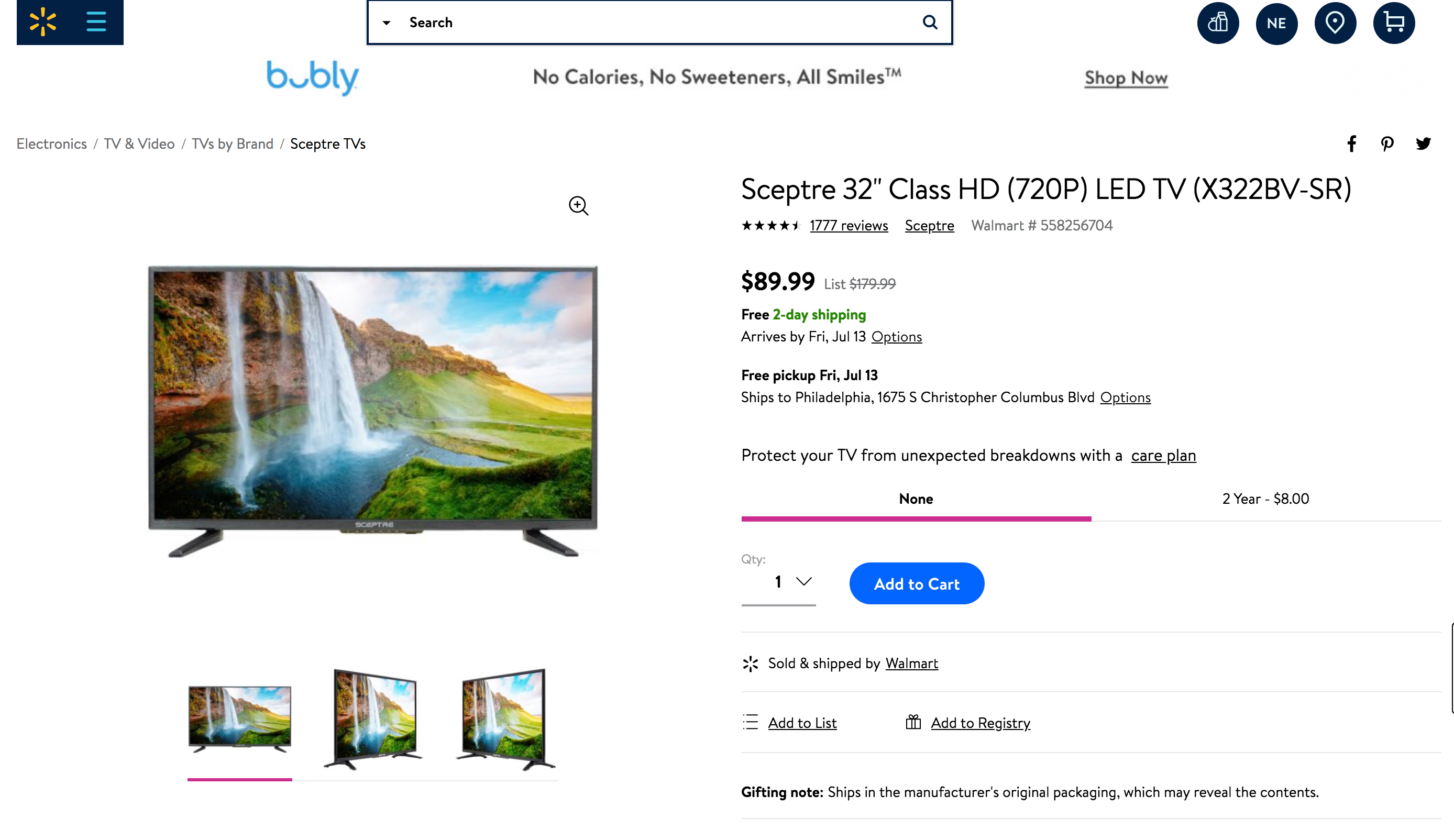
Link Profile

Keyword Footprint
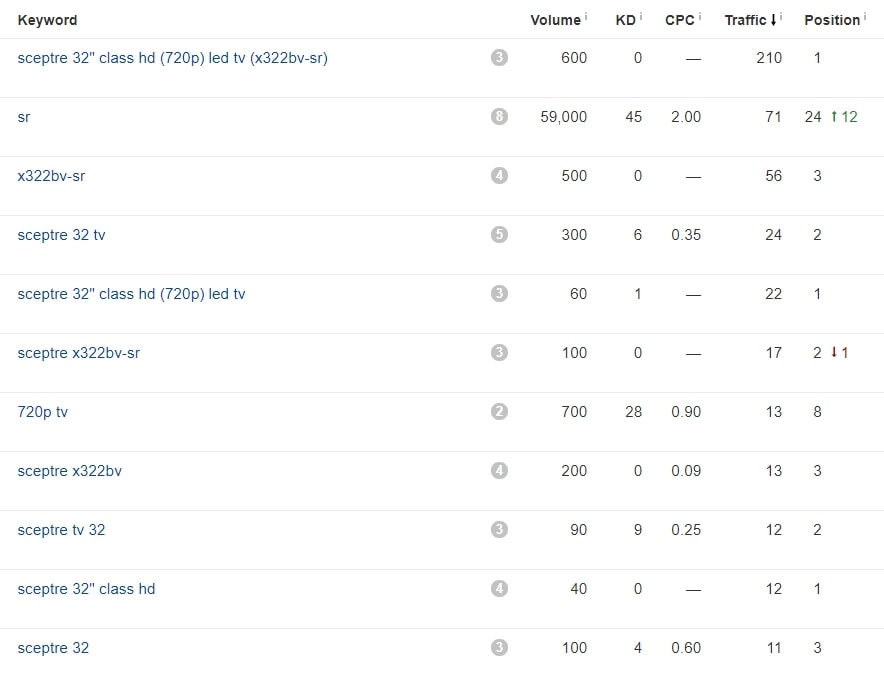

Link Profile

Keyword Footprint
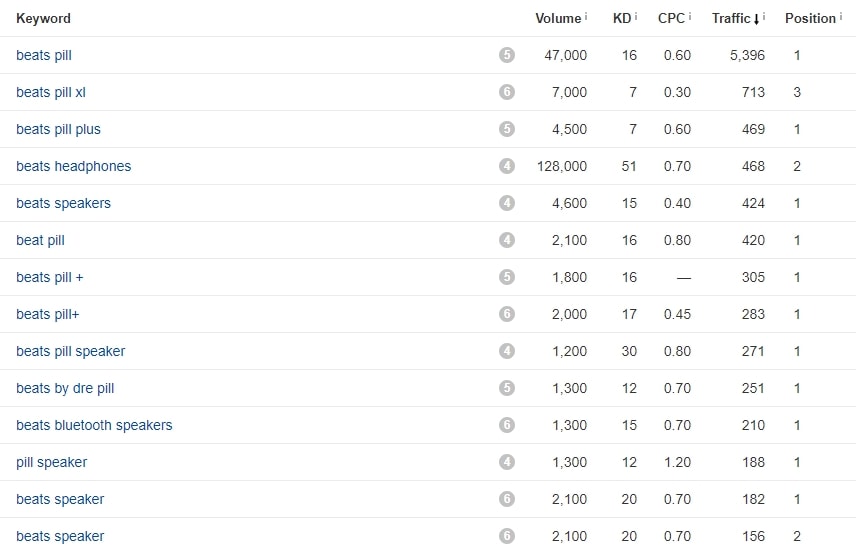
Content-Based Resources
Content-based resources may sound a bit redundant, and it probably is, but I needed a way to represent that these kinds of resources contain more than just lists of stats, or historical timeline type stuff (think Wikipedia) and instead are more representative of higher-end production, both in terms of research but also aesthetics.
For the purposes of content for Ecommerce, there are 2 flavors of content-based resources:
Content-Based Resources for Outreach
Content-based resources for outreach are those that are unlikely to rank on their own; think infographics and big interactive web experiences. The nuance here is these kinds of resources exist to build links, but those links must be built by pitching and promoting the underlying asset.

Link Building Results
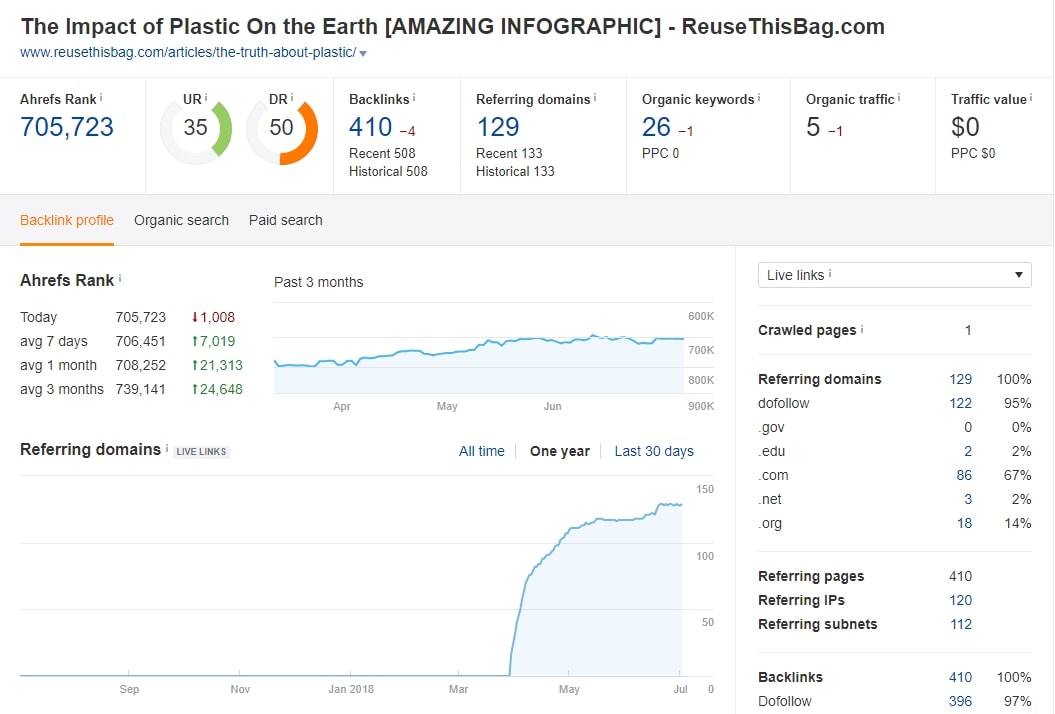

Link Building Results


Link Building Results

Content-Based Resources for SEO
Content-based resources for SEO are pages built to acquire traffic (and links) organically, i.e. they don't require outreach to begin performing both in search engines but also in terms of link acquisition.
The best way to think about this style of ecommerce content is to think about how many people do research for resources and use Google to find references to cite and link to (to back up their claims).
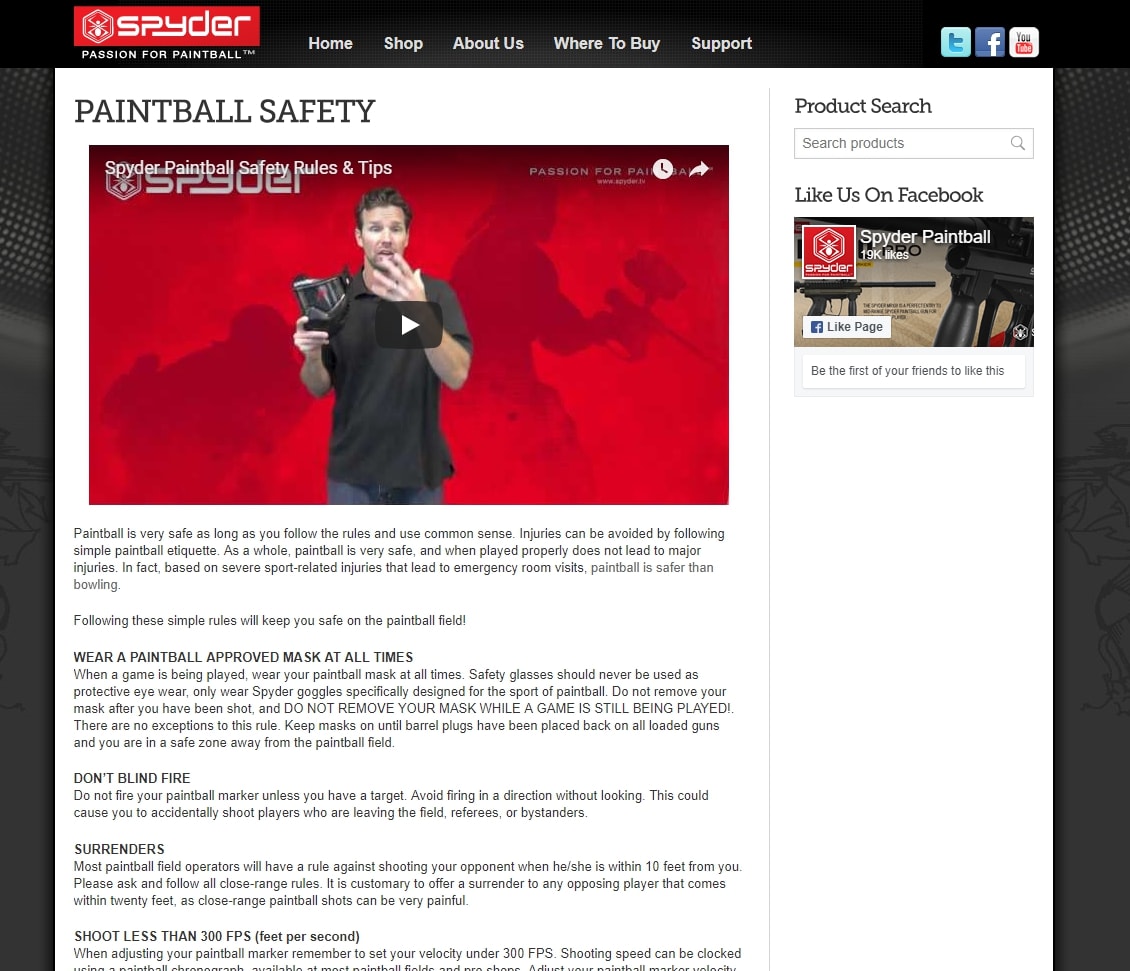
Keyword Footprint


Keyword Footprint

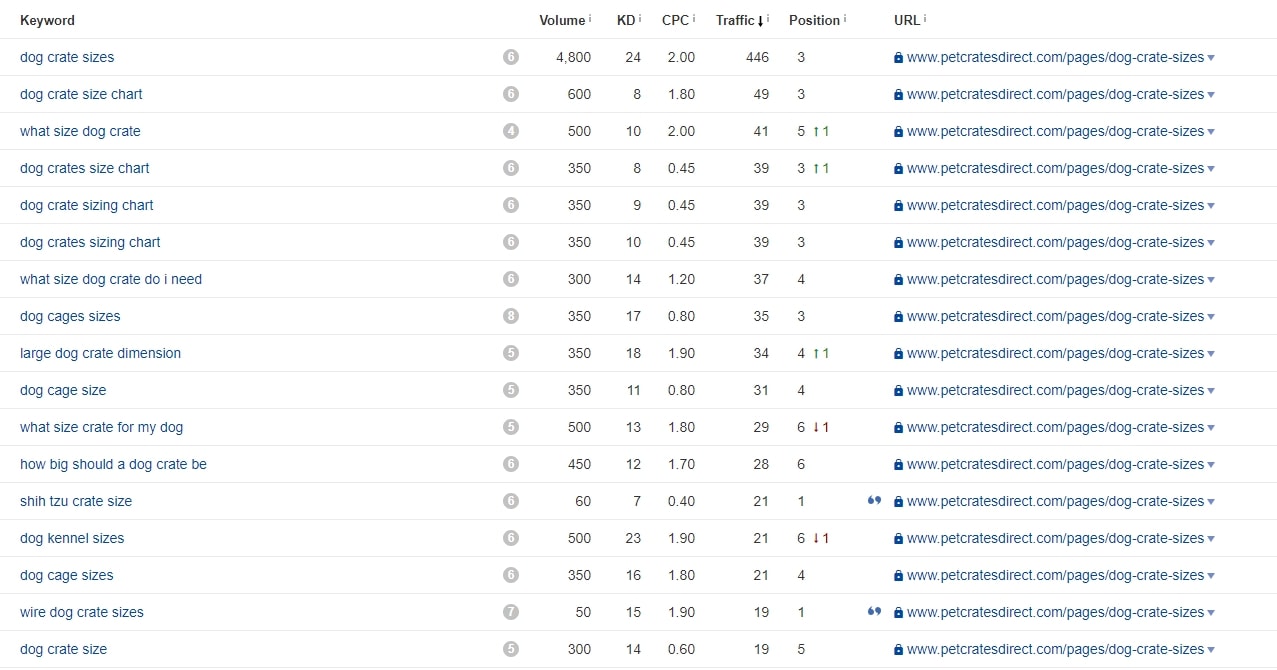
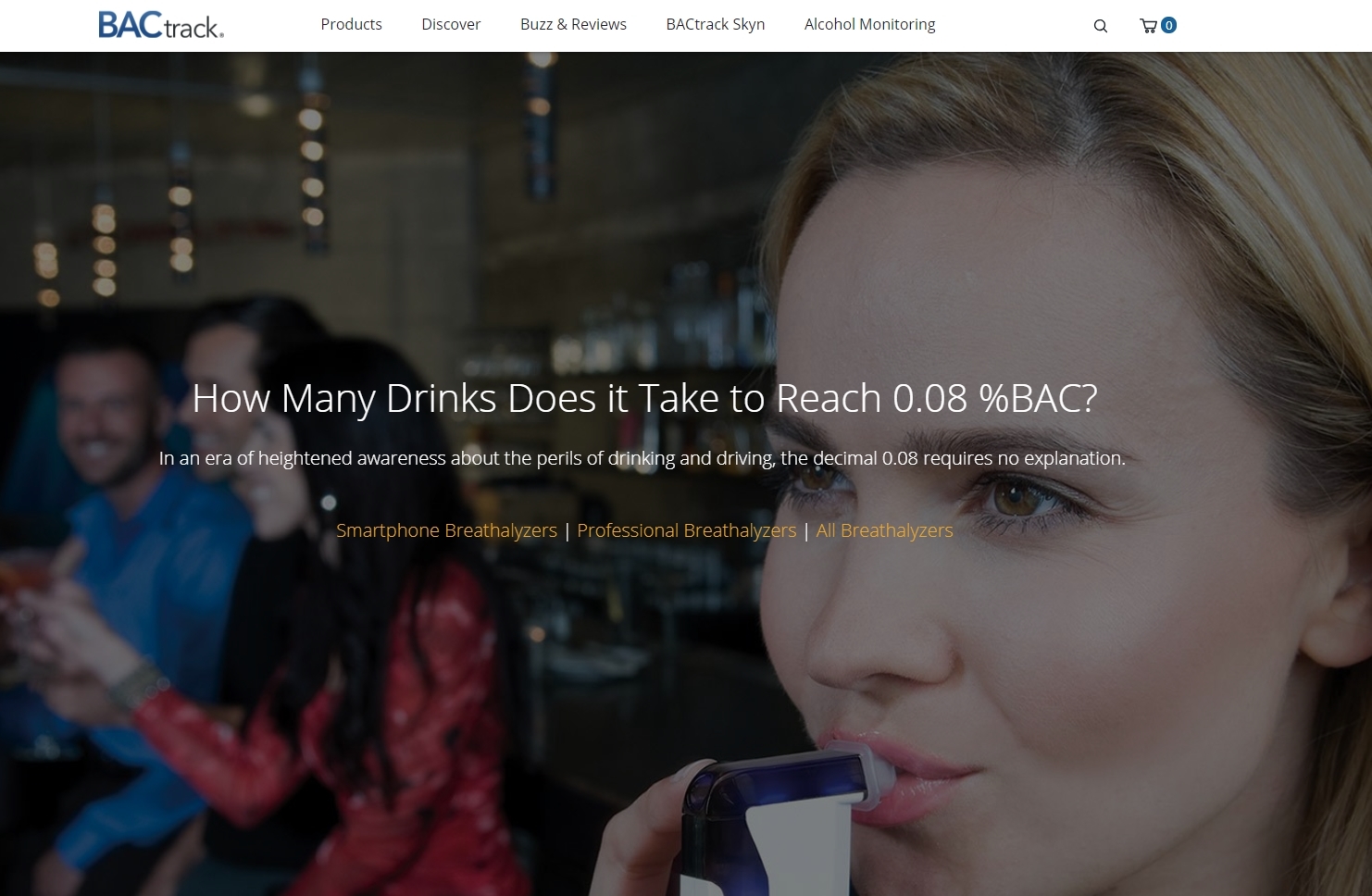
Keyword Footprint
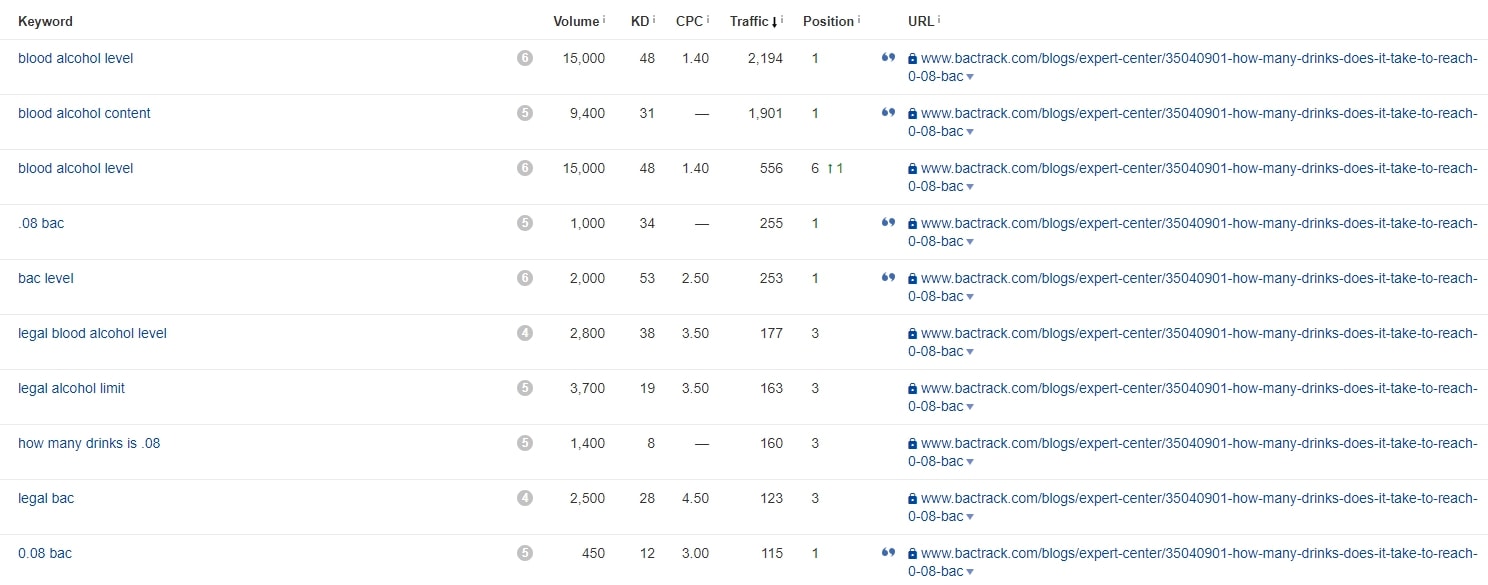
Solution-Focused Blog Posts
Solution-focused posts deliver recommendations or provide answers to common problems or frustrations within your niche. These are the true definition of "funnel content" as they often represent keyword targeting at a specific stage in the funnel.
What's important to remember here is that your customers problems can arise as any stage in the conversion funnel, top (no commercial consideration), middle (awareness and decision phase), and the bottom (price shopping and ready to purchase).
When this type of content is being designed, the focus should be on blowing out your on-page SEO to get these pages to rank for as many relevant and related terms as possible.
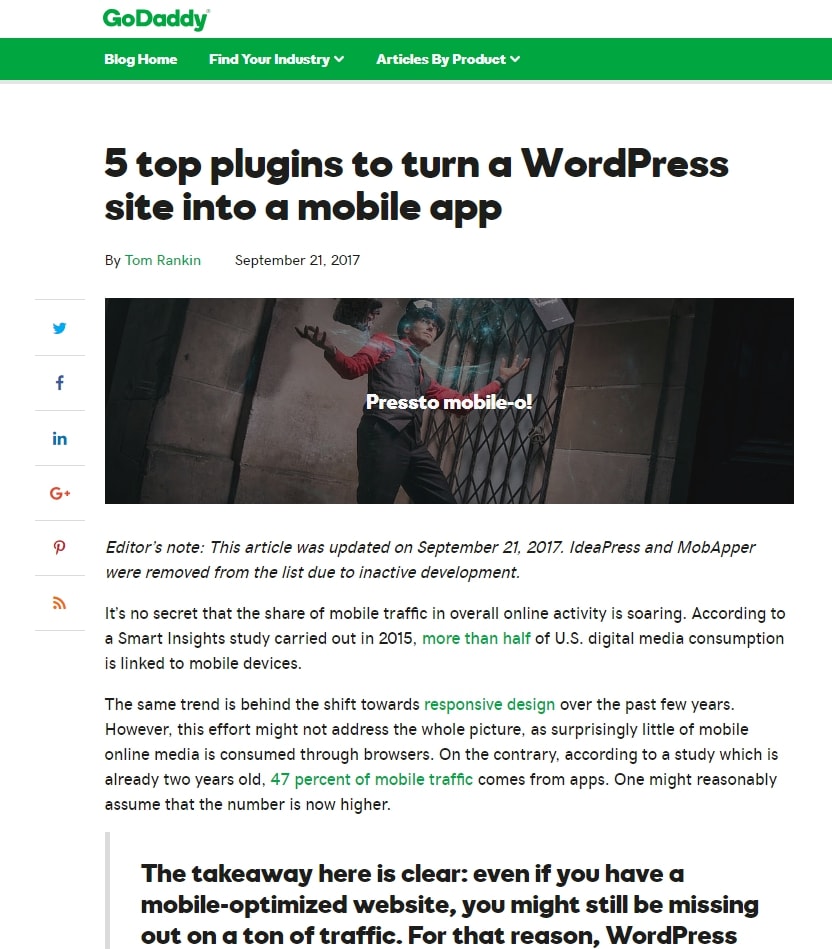
Keyword Footprint
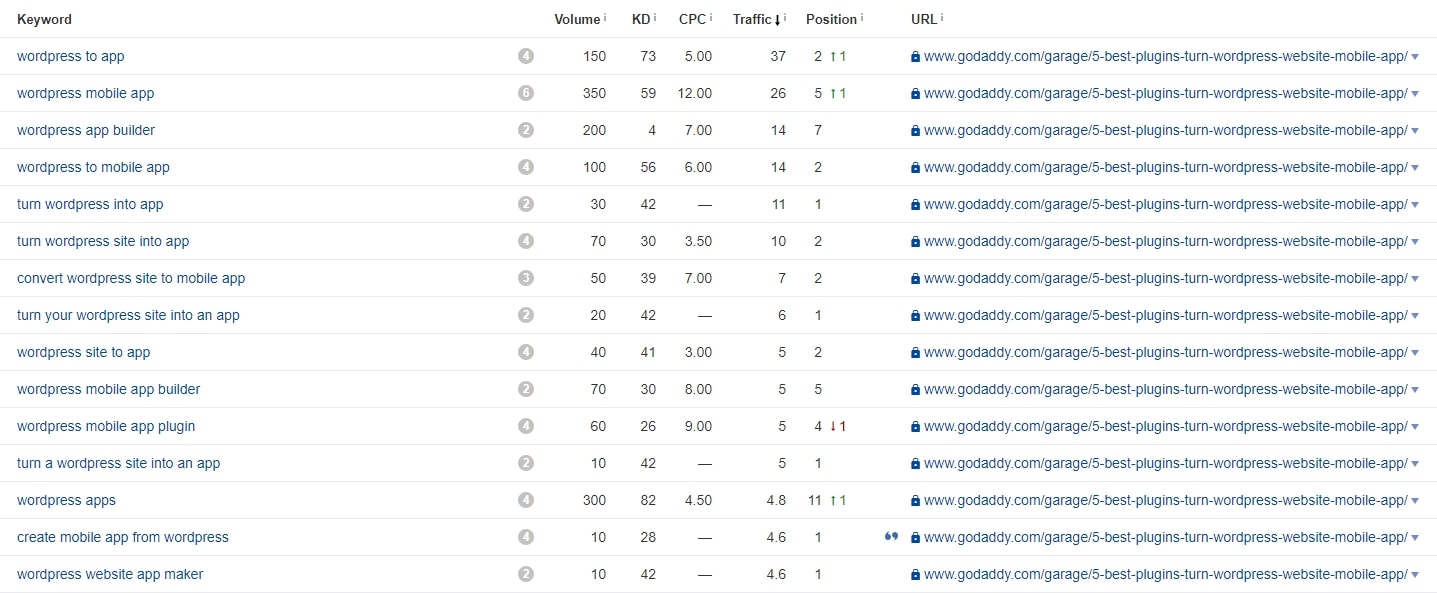

Keyword Footprint


Keyword Footprint

Trending News Topics
Trending news is not something you usually think about when it comes to creating strategic content for your ecommerce website, however, it can be a great source of short term rankings and traffic and lead to a significant bump in links if syndicated or mentioned in press outlets piggybacking off your research.

Passive Link Results


Keyword Footprint


Keyword Footprint
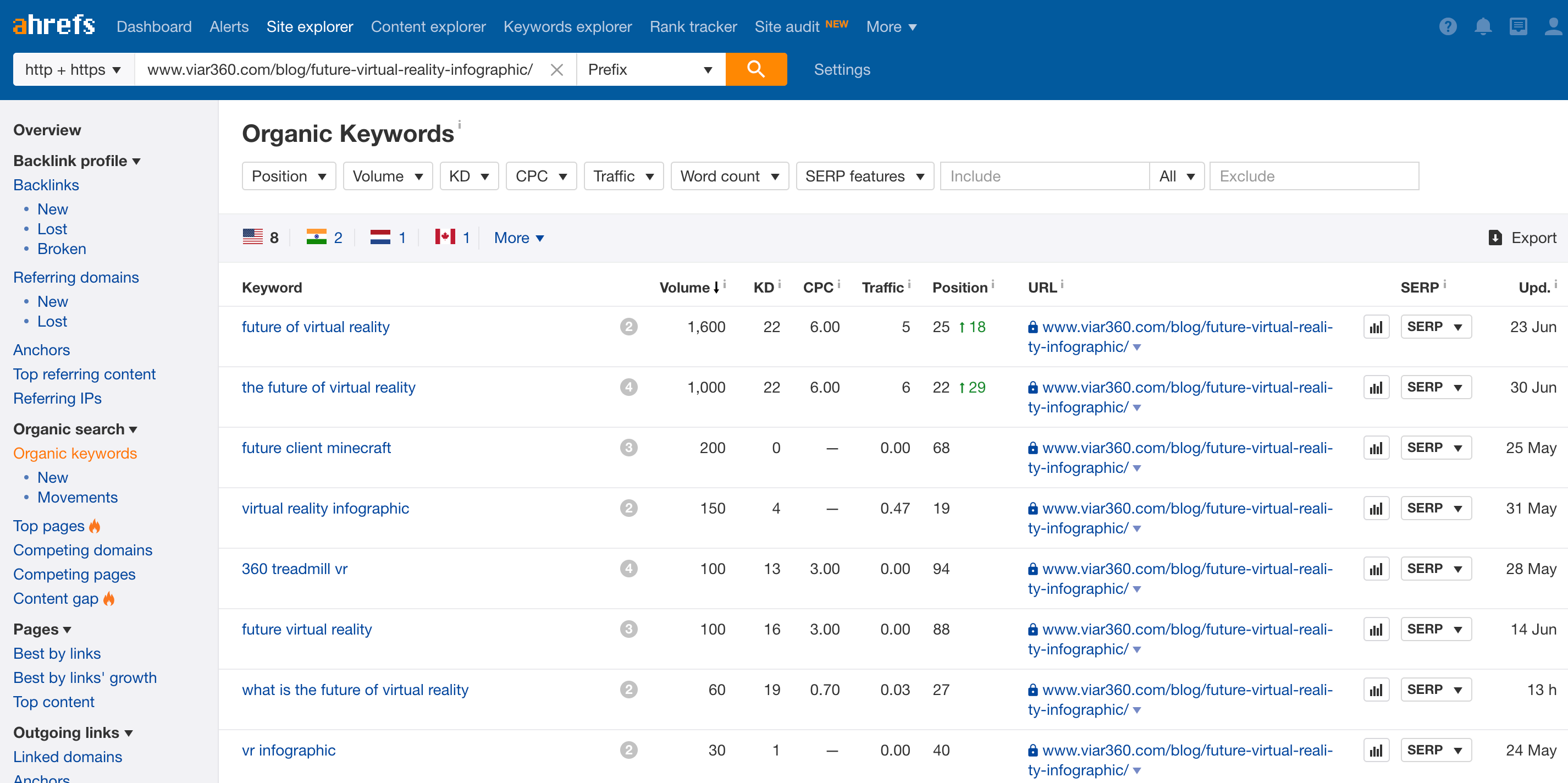
Scholarship-Based Resources
Scholarships are a popular way to get high trust .EDU links. Now scholarship link building is not what it once was.. and we have even seen some Google Search Console warnings for "unnatural links" for sites going to hard with their .EDU link building campaigns, but if your brand is big enough - this can still be a great way to land links from the thousands of pages on the internet that link to scholarship offers.
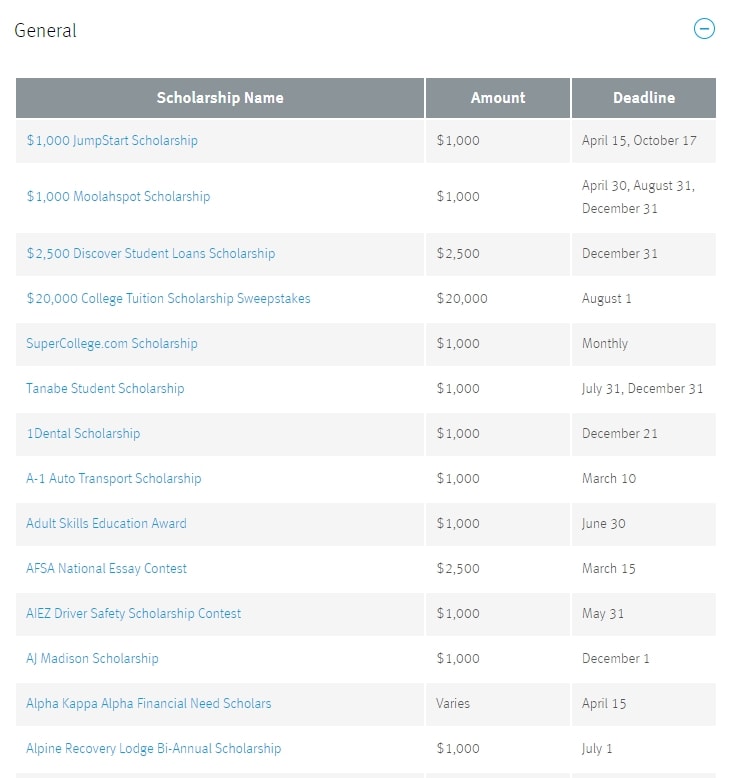
Link Profile


Link Profile

Topical Guest Posts
After Google publicly slammed guest posting via Matt Cutts in January of 2014 many SEO's abandoned the practice immediately. To offer some insight from real world, in the trenches experience;
-
. Guest posting, i.e. publishing posts on 3rd party websites, when done using hyper-relevant content for hyper-focused audiences not only is still a wonderfully effective way of building links, but of acquiring qualified traffic. Below are some examples of putting in the time to write relevant content for the publishers audience, and linking to resources that
to the topic.

Link Profile

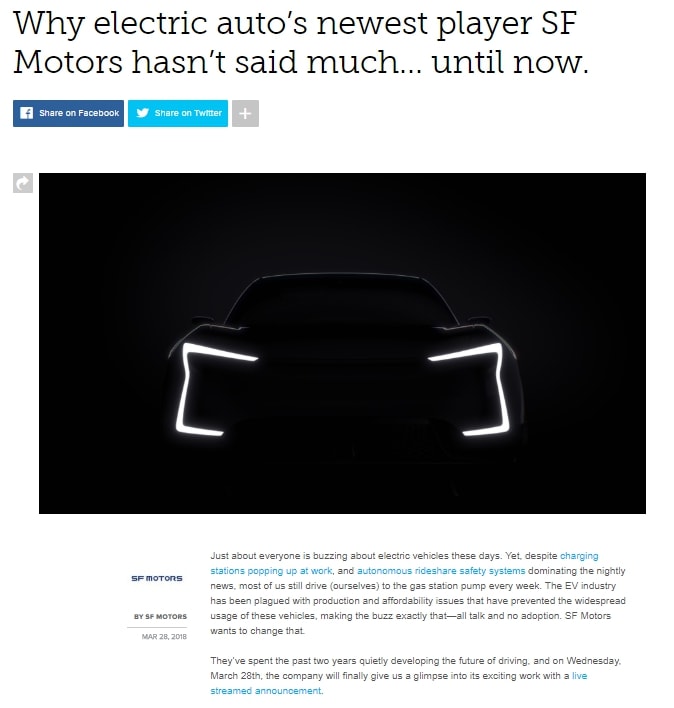
Link Profile

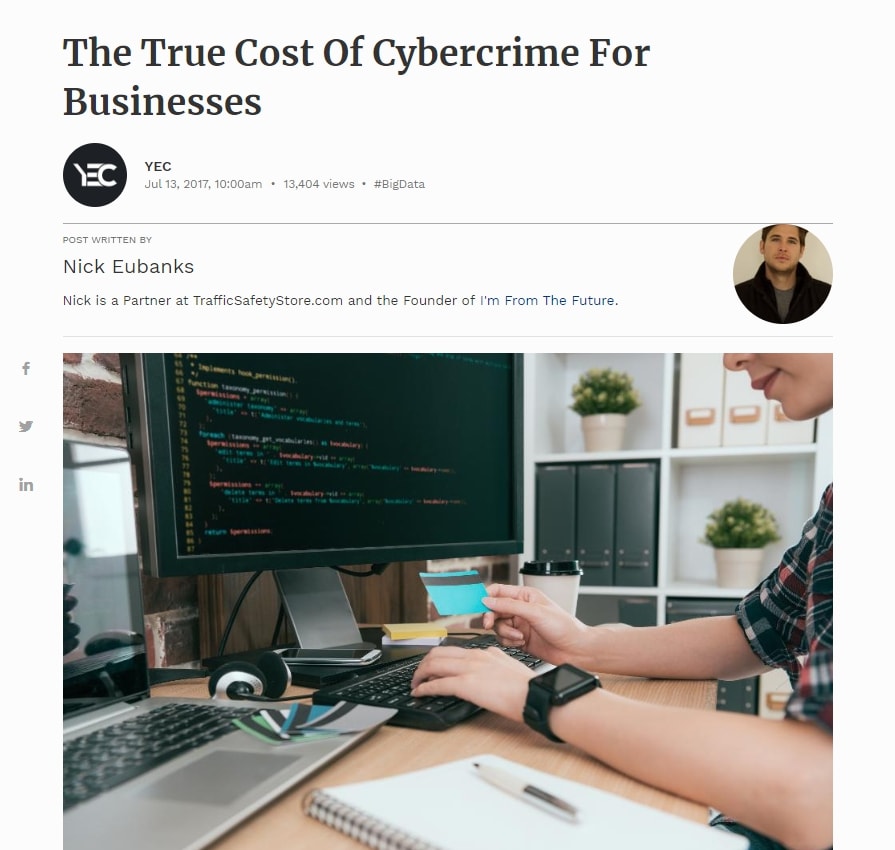
Link Profile

A Special Thank You
To our smart ec Kurtis Nysmith for providing much of the research for this post.
